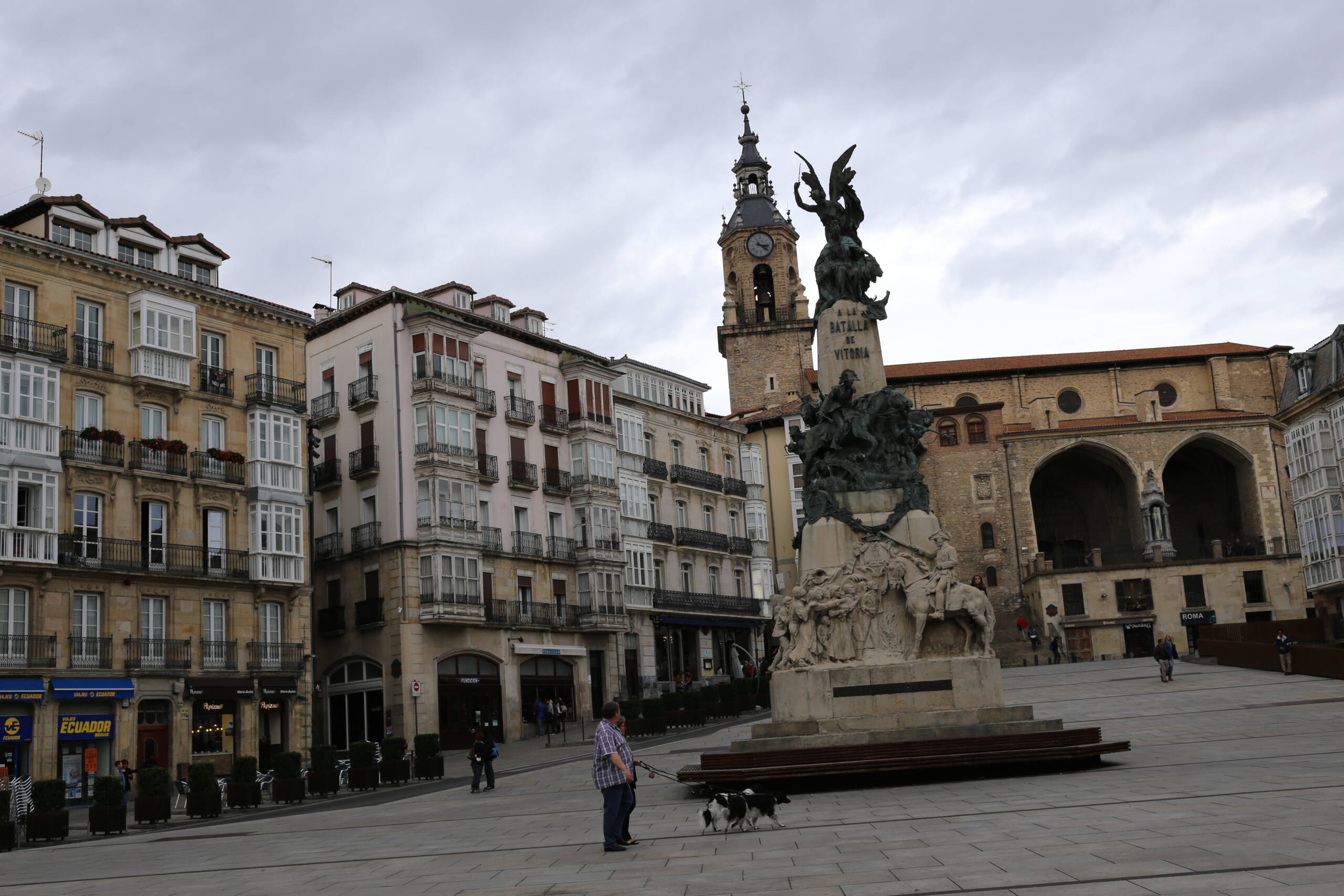Funny thing: the more I chase gear, the more I realize that some of my favorite images come from the days I carried almost nothing — just the Canon 6D and that unassuming EF 40mm f/2.8 pancake, the lens that looks more like a camera cap than actual glass. And somehow, that simplicity fits perfectly with Vitoria-Gasteiz, this calm and self-assured Basque capital where everything seems to exist at its own pace.

The scene unfolds around Plaza de la Virgen Blanca, a square that isn’t trying to impress through scale or noise but through authenticity. The sky that day was a soft slate gray — the kind of weather travel photographers either hate or secretly adore — because when the sun hides, textures, tones, and architecture suddenly start speaking louder. The surrounding buildings, with their elegant facades, narrow balconies, and slightly irregular geometry, look almost painted. Northern Spain leaves fingerprints of France, Spain, and local Basque identity on the stonework, and here, all those influences blend without argument.
At the center stands the Monumento a la Batalla de Vitoria — a dramatic, emotional sculpture marking the pivotal 1813 battle where Wellington’s forces finally pushed Napoleon’s army into retreat. If you stand beneath it, there’s a sense that the bronze figures never fully settled — like they might continue galloping or shouting or climbing forward if history blinked. It’s a monument, yes, but it’s also storytelling carved into silence.
Behind it rises the Church of San Miguel, its tower steady and sure, the clock face marking time the way old European towns do — not with urgency, but with ceremony. And scattered across the square, everyday life breathes: people strolling without rush, a dog walker guiding two curious sniffing companions, someone disappearing under an archway — tiny, ordinary gestures that make the place feel lived, not staged.
There’s a rhythm to this photo that I didn’t expect when I pressed the shutter. The stillness of architecture against the motion of people. The weight of centuries next to the lightness of daily life. The dramatic monument contrasted with the softness of the square and sky.
Maybe that’s why I love this shot — because nothing in it is forced. Not the light, not the composition, not the gear. The 40mm lens made me move my feet. The city made me lower my shoulders and look closer. And the photograph — well — it became less of an image and more of a memory. One of those rare ones that feels richer every time I return to it.
Leave a Reply